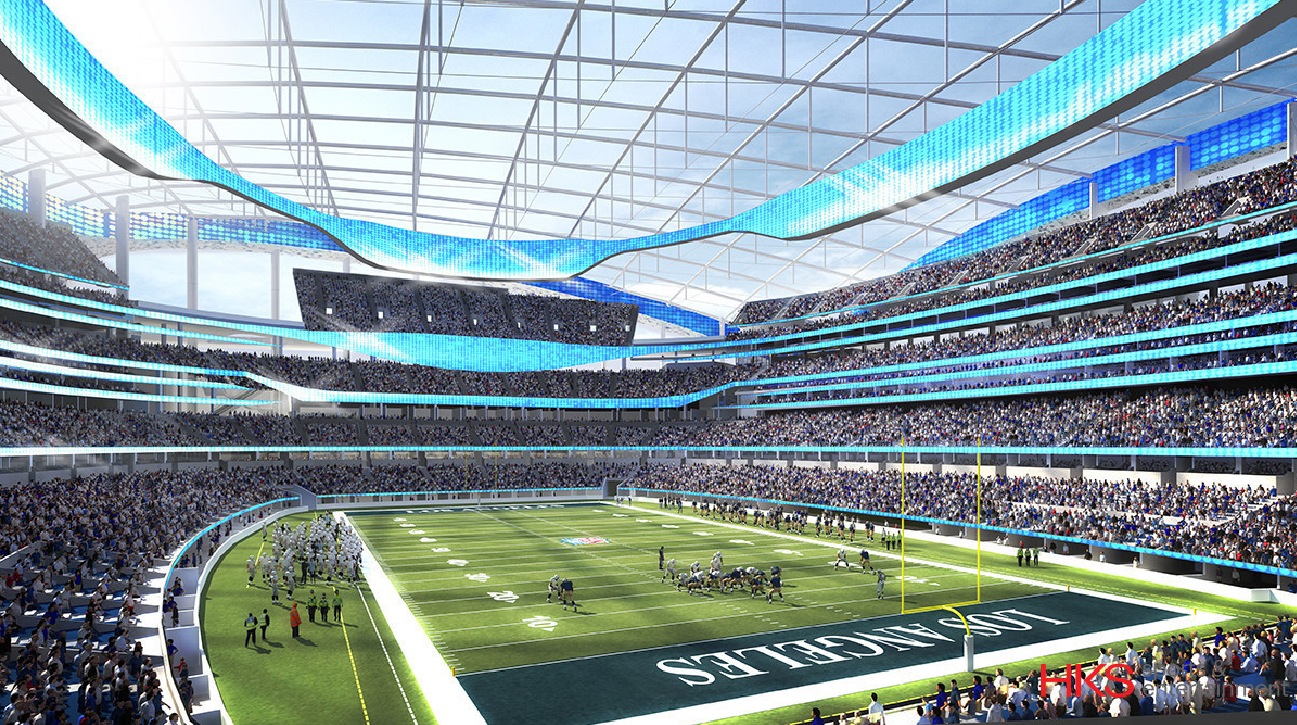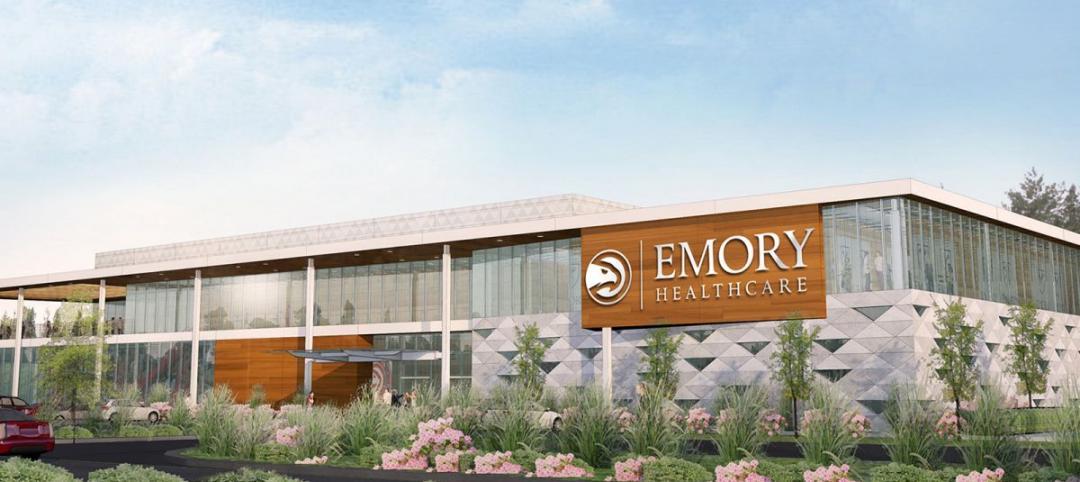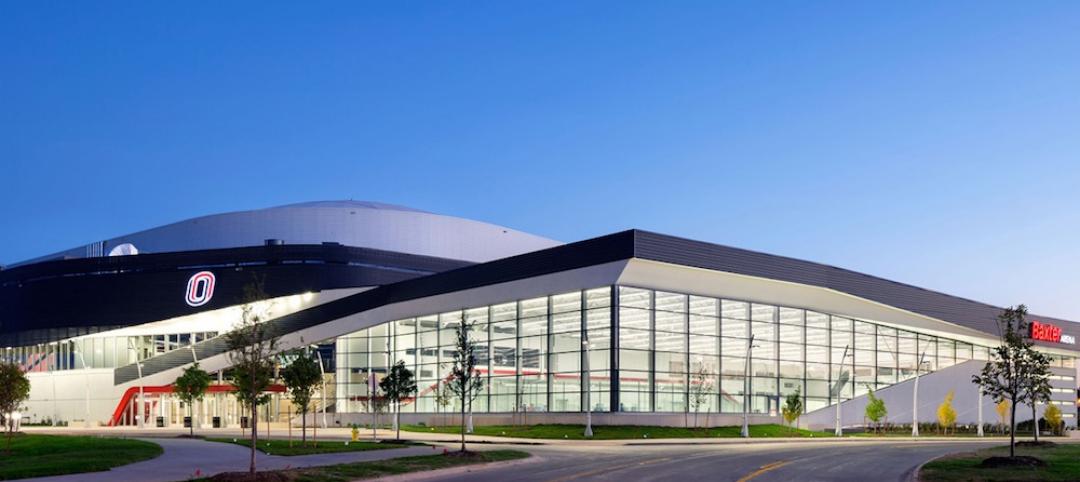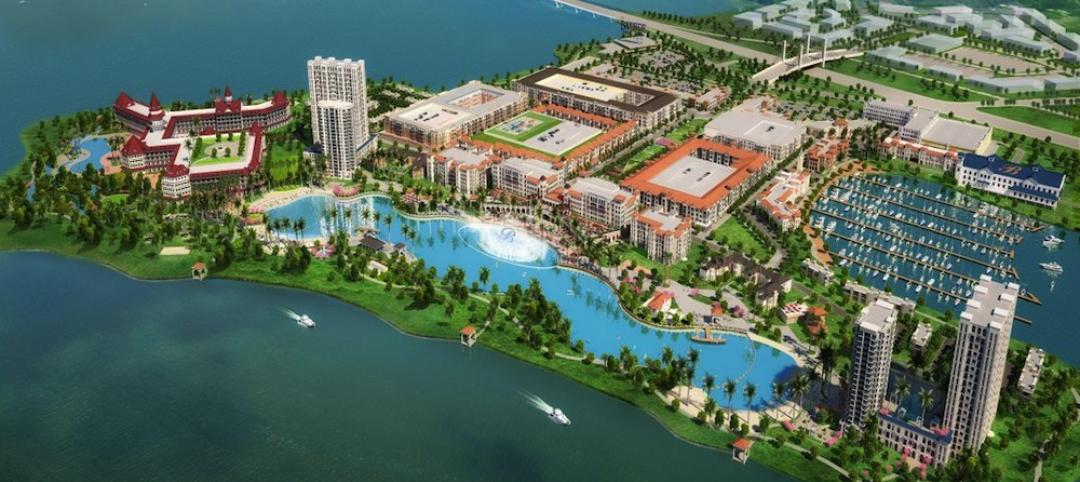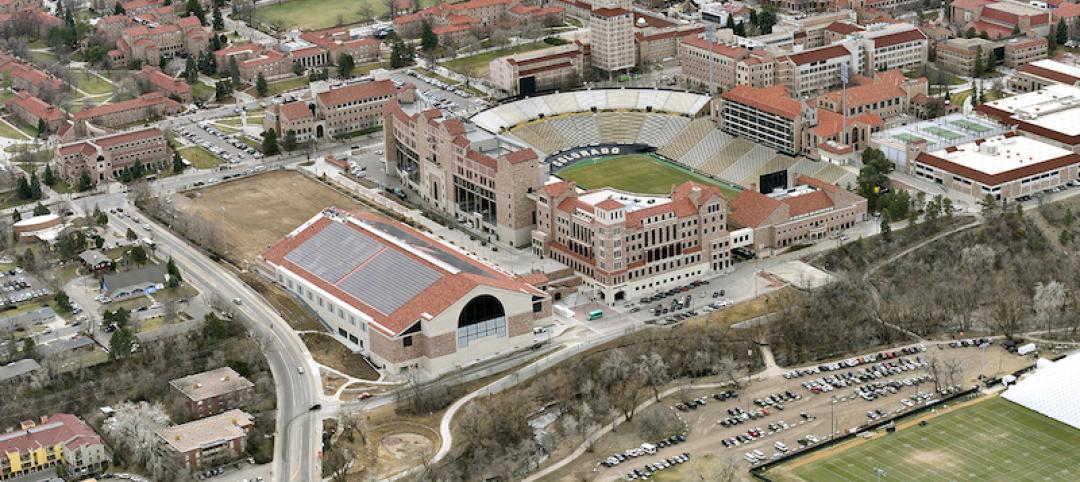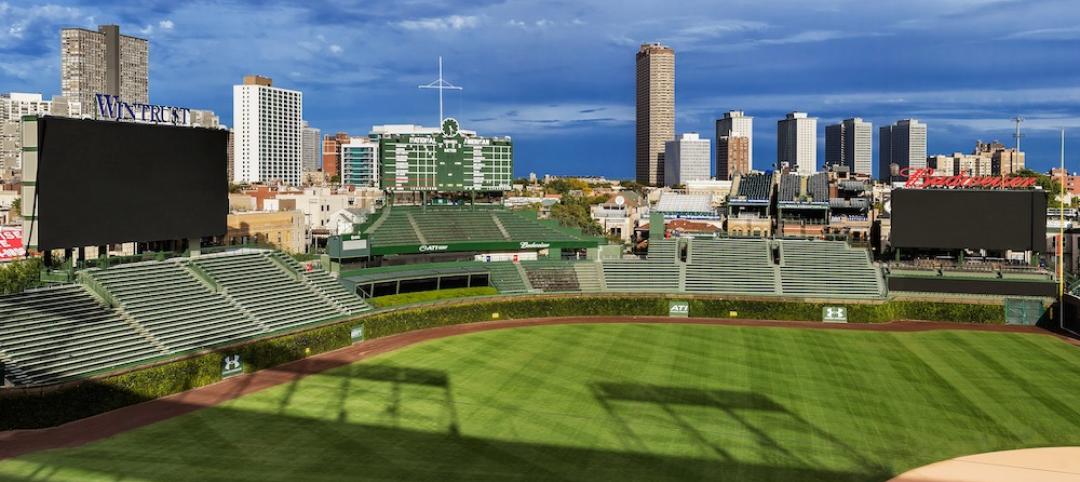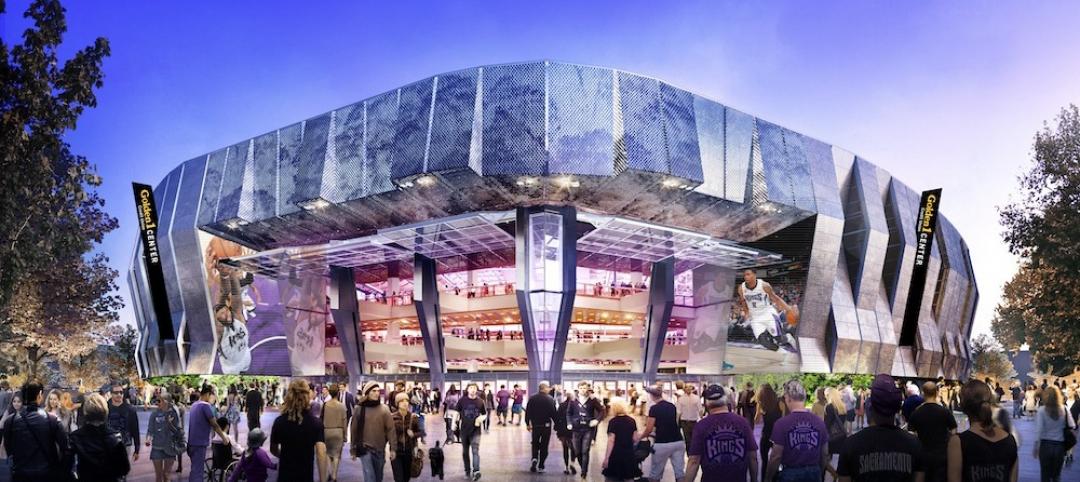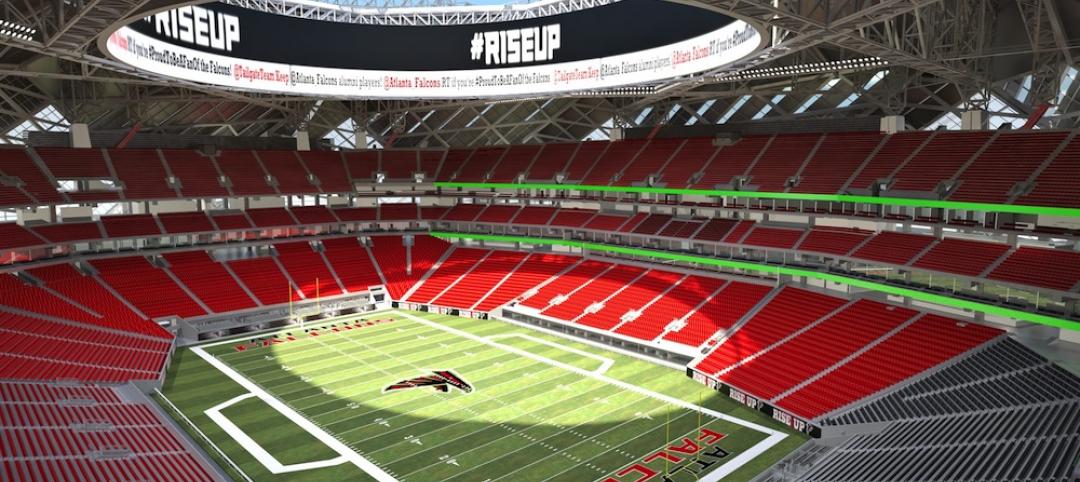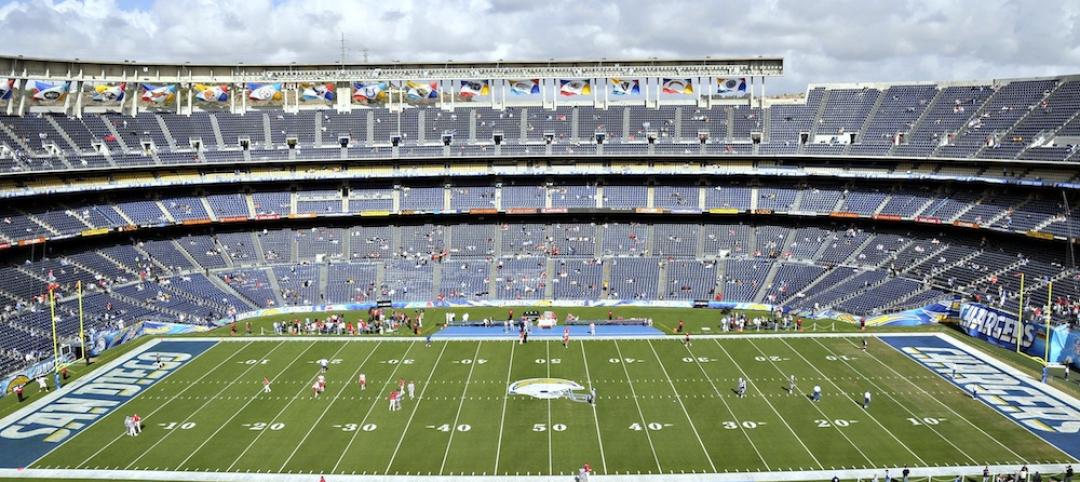After years of rumors and speculation, and with plenty of moving parts that still need to be sorted out, at least one thing is official: the St. Louis Rams are Los Angeles-bound.
The NFL owners voted in favor of the Rams’ plan of moving back to the city they called home from 1946 to 1994.
A new stadium will be built in Inglewood, Calif., on the site of the old Hollywood Park racetrack, roughly 10 miles from downtown Los Angeles. It is expected to be the league’s largest stadium in terms of area (at 8.5 million sf), and will cost between $1.8 billion and $3 billion.
The stadium will be set 100 feet into the ground with a 175-foot above ground profile. The roof will have open air on its sides with metal borders at the top, and the section over the playing field will be made of the transparent ETFE material, which is translucent but immensely strong. The stadium, which will have 70,000 seats and could expand to 100,000 with standing room only capacity, will be part of a 298-acre entertainment, retail, and housing complex.
“It's going to be so much more than going to a football game,” said Mark Williams of HKS, the firm designing the stadium, according to the Los Angeles Times. “You're going to be absorbed into the site, absorbed into the stadium, and get a very wide bandwidth of experience. It's the kind of memory people are going to cherish for a lifetime.”
The NFL is in favor of two teams moving to LA and sharing a stadium. The San Diego Chargers have the option of leaving their digs, the old Qualcomm Stadium, and joining the Rams in becoming co-tenants at the new LA stadium. They have a little more than one year to make a decision. If they decline, then the Oakland Raiders could choose to move from their home, the O.co Coliseum, and play in the new stadium with the Rams.
Meanwhile, both the Chargers and Raiders are working to stay in their current cities (at least that's what both teams’ owners are saying). If they stay, the NFL will give them each $100 million toward a new stadium.
The original plan for the Raiders and Chargers was for the teams to share a stadium, designed by Manica Architecture, in Carson, Calif. That was voted down by the owners in part because of logistics (the league would’ve had to realign divisions), and in part due to location. The $1.7 billion stadium in Carson would’ve been built on top of an old landfill.
 The proposed Carson Stadium was voted down by NFL owners. Rendering: Manica Architecture
The proposed Carson Stadium was voted down by NFL owners. Rendering: Manica Architecture
The next step for the Rams will be to determine where they’ll play next. The team’s temporary home is expected to be the LA Coliseum, a 92-year-old bowl stadium that seats more than 93,000 people. The University of Southern California’s football team currently plays there on Saturdays. Other options for the Rams include the Rose Bowl in Pasadena and Angel Stadium of Anaheim.
Los Angeles has been without football since the 1994 season, when both the Rams and Raiders moved. For the 1995 season, the Rams played at St. Louis’s Busch Stadium before moving into the now-named Edward Jones Dome later in the season. The Rams stayed at the dome through the 2015 season.
The Rams turned down a recent plan to stay in St. Louis, which included a $1 billion HOK-designed stadium on the Mississippi River.
Though financing was an issue for the proposed St. Louis stadium, it’s unclear how serious the team considered the plan. Rams’ owner Stan Kroenke bought the land in Inglewood back in early 2014, which had fueled relocation rumors since.
 The proposed riverfront stadium in St. Louis. Rendering: HOK
The proposed riverfront stadium in St. Louis. Rendering: HOK
Related Stories
Sports and Recreational Facilities | May 6, 2016
NBA’s Atlanta Hawks to build new practice center with attached medical facilities
The team will have easy access to an MRI machine, 3D motion capture equipment, and in-ground hydrotherapy.
BIM and Information Technology | May 2, 2016
How HDR used computational design tools to create Omaha's UNO Baxter Arena
Three years after writing a white paper about designing an arena for the University of Nebraska Omaha, HDR's Matt Goldsberry says it's time to cherry-pick the best problem-solving workflows.
Mixed-Use | May 1, 2016
A man-made lagoon with a Bellagio-like fountain will be the highlight of a mixed-use project outside Dallas
Construction will soon begin on housing, retail, and office spaces.
Sports and Recreational Facilities | Apr 17, 2016
An expanded and renovated complex brings together U. of Colorado’s sports programs
This two-year project enhances the experiences of athletes and fans alike.
Sports and Recreational Facilities | Apr 13, 2016
Cubs take a measured approach when planning HD video boards
Along with the mammoth and super-sharp video boards, Wrigley Field's 1060 Project includes renovated bleachers, upgraded player amenities, and more concourses, decks, and concessions.
Sports and Recreational Facilities | Apr 13, 2016
More than a game: 4 ways sports teams are adapting to changing fan preferences
As the cost of tickets, parking, and concessions skyrockets, while home theater technology becomes more affordable, fans wonder: Why even bother going to the game? Here’s how progressive sports owners and Building Teams are packing stadium seats.
Sports and Recreational Facilities | Apr 11, 2016
Chicago Cubs continue Wrigley Field renovations with new clubhouse
The team found 30,000 sf of space underneath an old parking lot, nearly tripling the size of the old clubhouse.
Sports and Recreational Facilities | Apr 6, 2016
Las Vegas debuts another new arena, with a number of ‘firsts’
The gambling mecca has its eyes on attracting a pro sports team.
Sports and Recreational Facilities | Apr 5, 2016
The importance of true cost-modeling for sports facilities
Many factors prevent sports facilities from immediate profitability. Rider Levett Bucknall’s Peter Knowles and Steve Kelly write that cost modeling, the process of estimating construction expenses by analyzing fixed and variable expenses, can push facility development to financial success.
Sports and Recreational Facilities | Apr 1, 2016
San Diego Chargers announce plan for downtown stadium and convention center
The project will be funded primarily by a tax increase on hotel stays.


